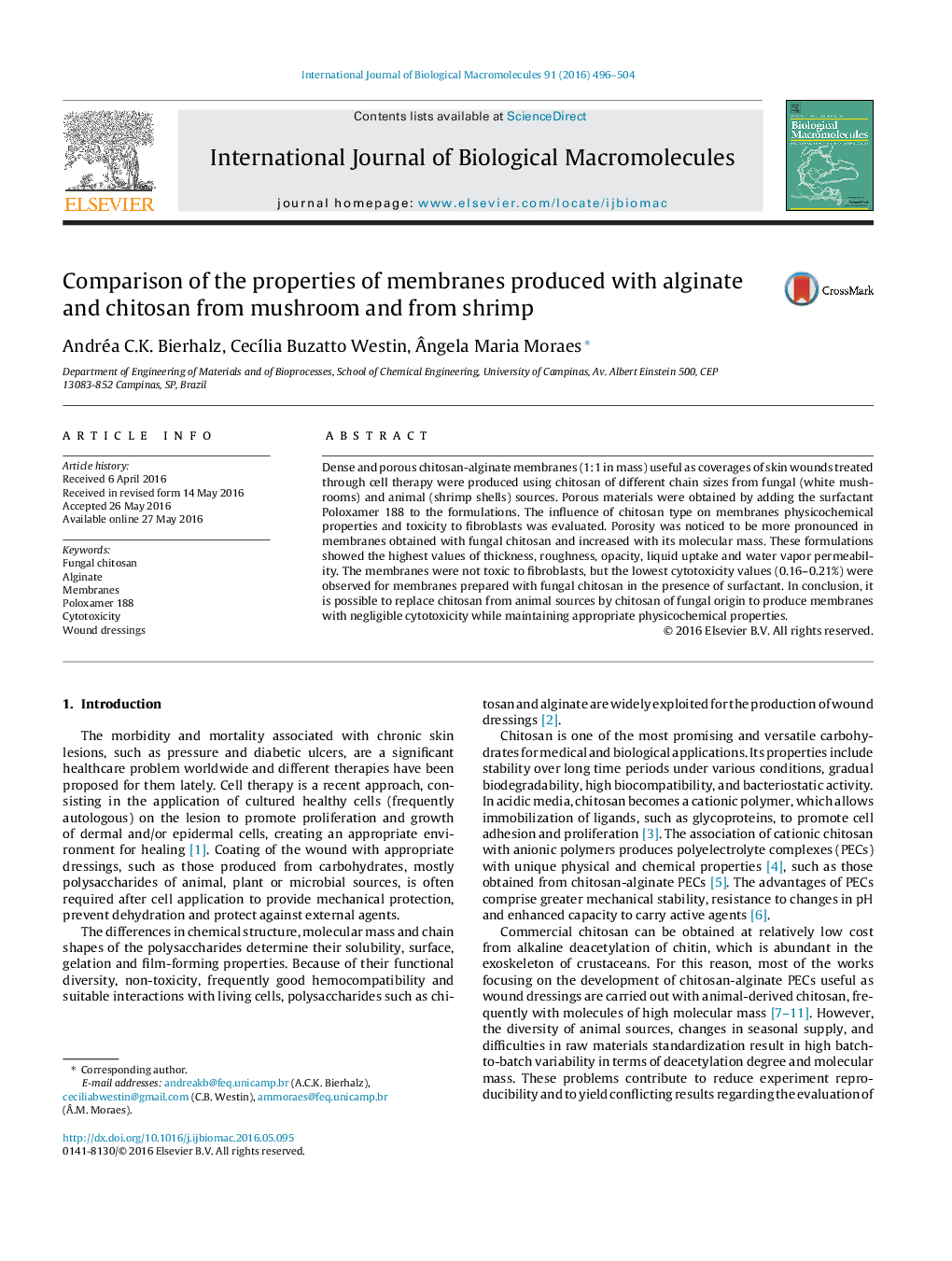| Article ID | Journal | Published Year | Pages | File Type |
|---|---|---|---|---|
| 1985653 | International Journal of Biological Macromolecules | 2016 | 9 Pages |
Abstract
Dense and porous chitosan-alginate membranes (1:1 in mass) useful as coverages of skin wounds treated through cell therapy were produced using chitosan of different chain sizes from fungal (white mushrooms) and animal (shrimp shells) sources. Porous materials were obtained by adding the surfactant Poloxamer 188 to the formulations. The influence of chitosan type on membranes physicochemical properties and toxicity to fibroblasts was evaluated. Porosity was noticed to be more pronounced in membranes obtained with fungal chitosan and increased with its molecular mass. These formulations showed the highest values of thickness, roughness, opacity, liquid uptake and water vapor permeability. The membranes were not toxic to fibroblasts, but the lowest cytotoxicity values (0.16-0.21%) were observed for membranes prepared with fungal chitosan in the presence of surfactant. In conclusion, it is possible to replace chitosan from animal sources by chitosan of fungal origin to produce membranes with negligible cytotoxicity while maintaining appropriate physicochemical properties.
Related Topics
Life Sciences
Biochemistry, Genetics and Molecular Biology
Biochemistry
Authors
Andréa C.K. Bierhalz, CecÃlia Buzatto Westin, Ãngela Maria Moraes,
